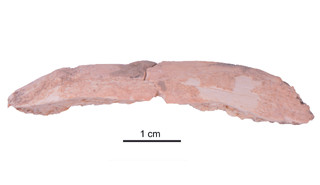
A genetic bottleneck may have contributed to the extinction of Neanderthals
An article published in the journal “Nature Communications” reports the results of the study of the inner ear of Neanderthals that suggests that at a certain point in their history there was a genetic bottleneck that may have contributed to their extinction. A team of researchers examined the semicircular canals, structures whose development is strongly determined by genes, to assess the history of Neanderthals. According to the conclusions, the morphological diversity of these anatomical structures shows a decline about 110,000 years ago.
This is not the only recent research that suggests a genetic stagnation of Neanderthals because a few weeks ago, an article was published in the journal “Scientific Reports” that focuses on the blood groups of Homo sapiens, Denisovans, and Neanderthals. Genetic analysis shows that Neanderthals had a blood type that’s very rare in Homo sapiens with very limited variability over about 80,000 years. This may have made them vulnerable to various health problems.





